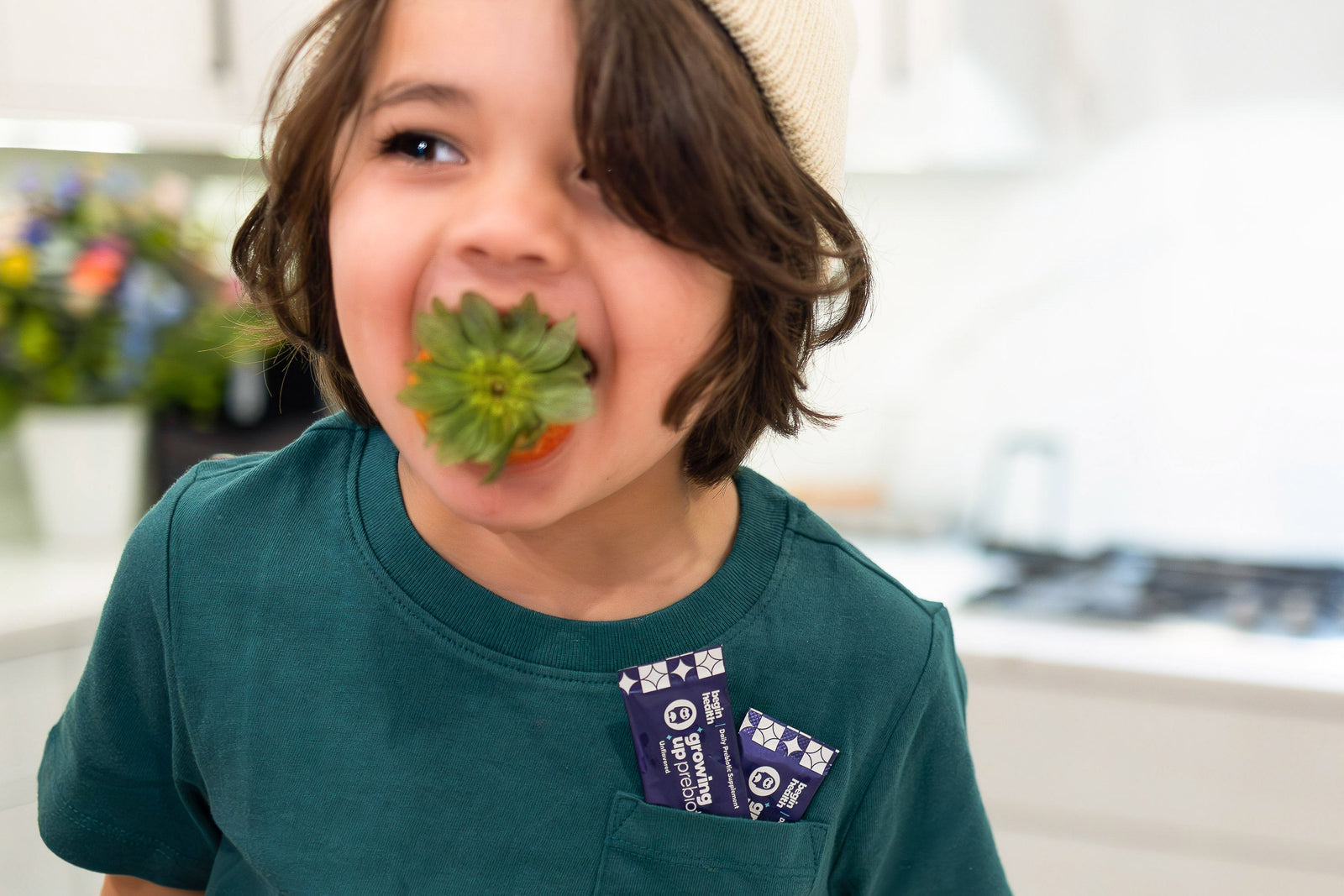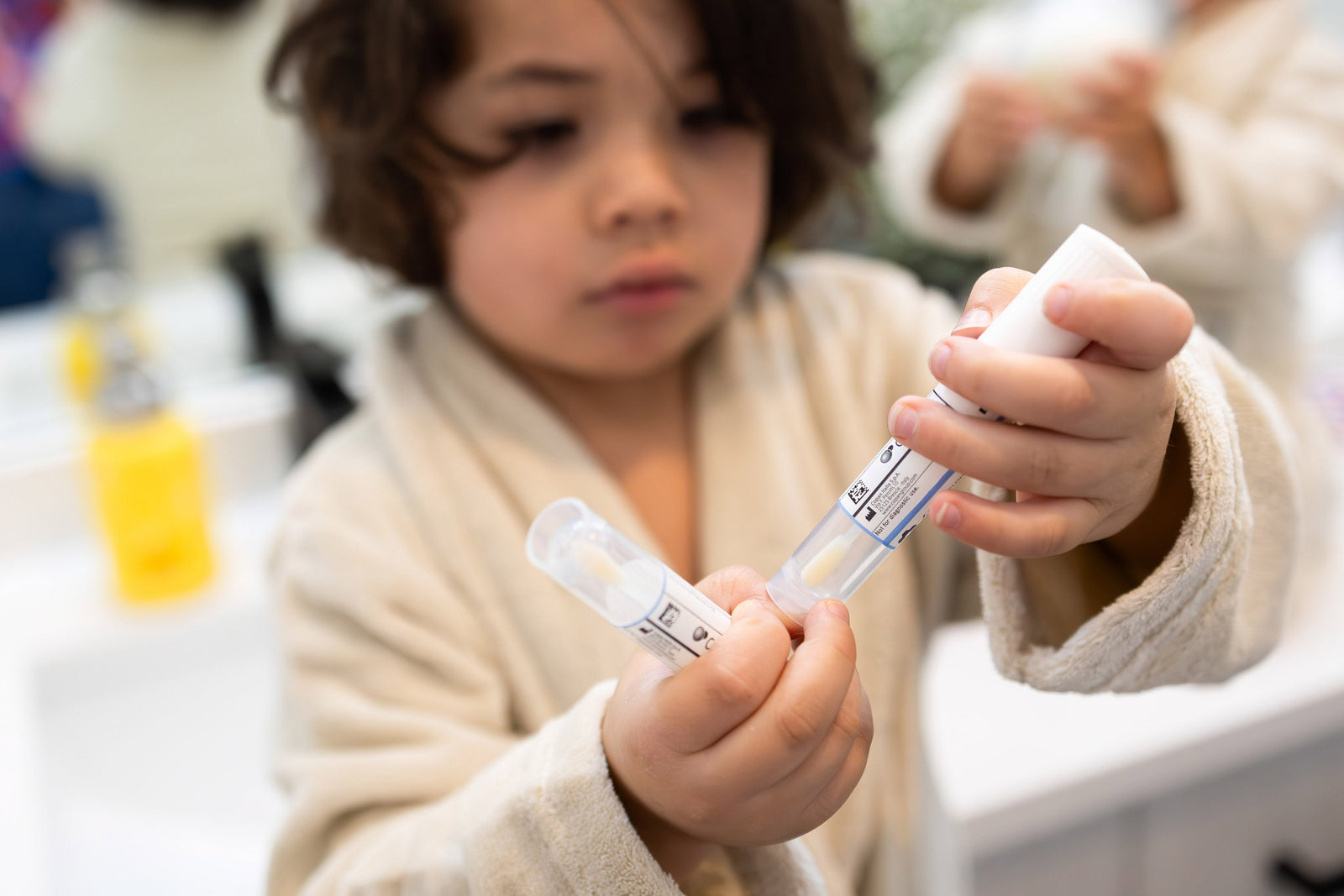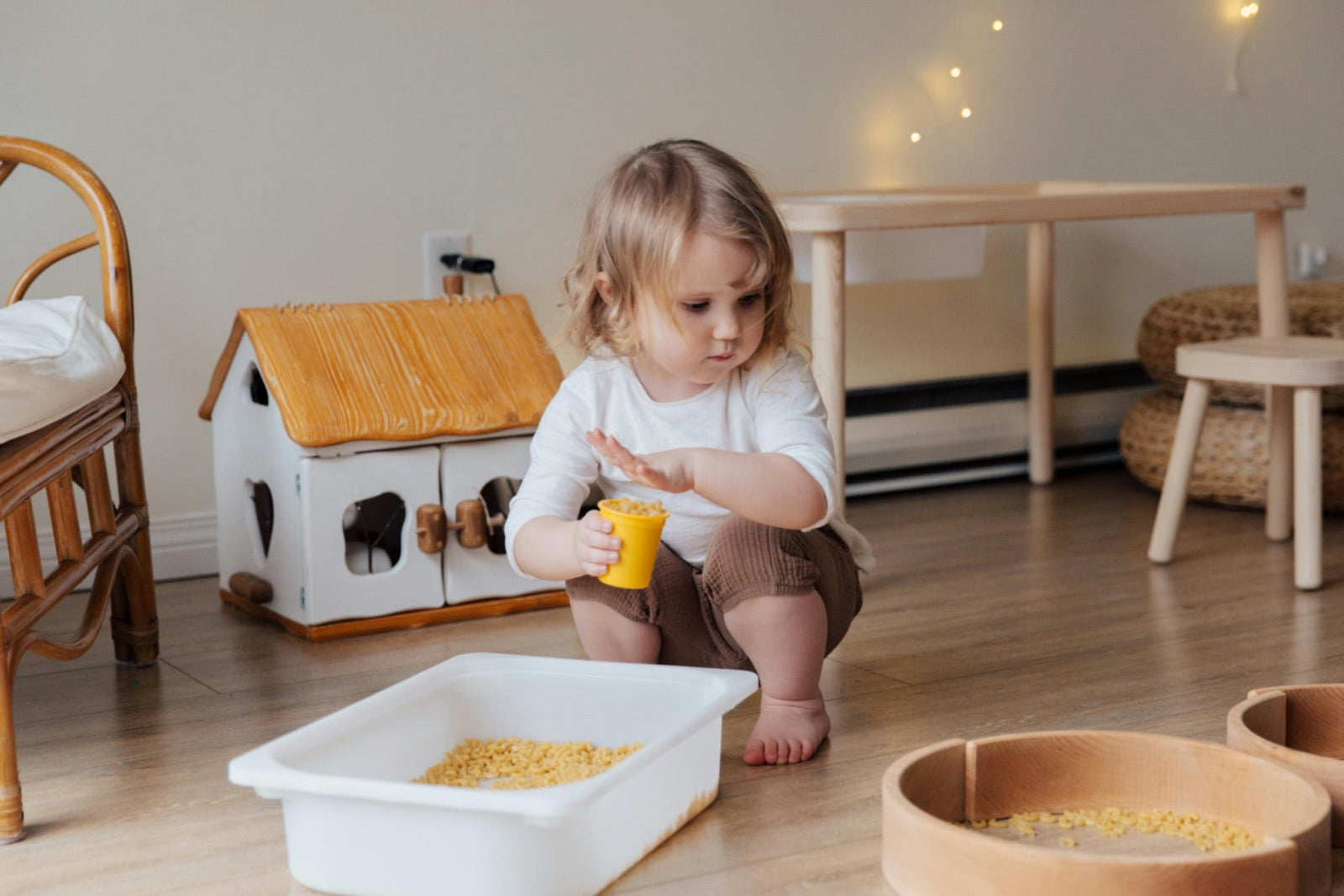Your Cart is Empty
Continue shoppingThe Psychology Behind Potty Training and Kids with ASD
Medically reviewed by Dr. Meredith Stremel | Published February 09, 2025
share this article
 Potty training is an exciting milestone in a kid’s development, marking the beginning of a new chapter in their growing independence.
Potty training is an exciting milestone in a kid’s development, marking the beginning of a new chapter in their growing independence.
For parents of kiddos with autism spectrum disorder (ASD), this journey may look a little different, but with the right approach, it can be just as rewarding.
Read more here about the benefits of prebiotics for kids with autism.
Every kid has their own unique strengths and challenges, and understanding these can pave the way for a positive potty learning experience.
By understanding the psychological factors behind potty training, caregivers can use practical strategies to address sensory sensitivities, enhance communication, and create a structured, supportive environment for success.
The Role of Structure, Routine, and Motivation in Potty Training Success
When it comes to potty training, structure and routine lay the groundwork for success, especially for kiddos with ASD. Kids thrive when they know what to expect, and having a predictable plan can help them feel more secure and confident in learning new skills like using the potty (Cagliani et al., 2021).
For parents, this might look like setting specific times during the day for your kid to sit on the potty, such as right after meals or before bedtime.
Keeping this schedule consistent every day can make a big difference. Pair this with a visual schedule or a simple checklist that your kid can follow, and you’re giving them a framework that’s both manageable and empowering.
Motivation also plays a large role in potty training success for many kiddos. Instead of jumping straight to rewards, think about what truly motivates your kid. Maybe it’s the joy of hearing your excited praise or a facetime call to a relative after a successful trip to the potty.
Reinforcement works best when it’s paired with these moments of success to help your kid connect their effort to positive outcomes.
Research has found that using simple, consistent motivators like praise, gentle guidance, and practice opportunities can lead to fewer accidents and more confident bathroom use (Cicero and Pfadt, 2002).
To bring this into your routine, start by celebrating the small wins.
Did your kid sit on the potty, even if they didn’t go? That’s progress!
Share your excitement and let them know they’re doing a great job. When they do successfully use the potty, keep the focus on how proud they can feel for doing it themselves.
Motivation builds momentum, and over time, those small steps lead to big strides.
Challenges in Potty Training Kids with ASD
Potty training can be a unique challenge for autistic kids. Sensory sensitivities, communication differences, and a need for routine often play a big role in how they approach new skills like using the toilet.
Understanding these challenges can help parents feel better prepared and more confident in guiding their kid.
Sensory Differences and Their Impact
Many kids with ASD experience the world through a different sensory lens. Sounds, textures, and smells that might go unnoticed by others can feel overwhelming to them.
For example, the sound of the toilet flushing, the feel of the seat, or the smell of the bathroom may cause discomfort or fear, leading to resistance (Griffin et al., 2022; Baum et al., 2015).
Parents can help by pinpointing what might be bothering their kid. For example:
-
Lighting Adjustments: If the bathroom lighting feels too bright, try using a nightlight or dimmer light instead. Softer lighting can create a calmer environment.
-
Temperature Control:If your kid is sensitive to temperature changes, make sure the bathroom is warm and comfortable. You can also warm the toilet seat slightly with your hand or a hair dryer before they sit down.
-
Toilet Sound Concerns:If the flushing sound is frightening, allow your kid to use noise-canceling headphones or practice flushing together at a separate time to help them get used to it.
-
Bathroom Smells: If strong smells in the bathroom bother your kid, use a lightly scented air freshener or keep the space well-ventilated. Choose scents that are subtle and not overwhelming.
Communication Barriers
For some toddlers or kids with ASD, understanding and expressing their needs can be tricky, especially when it comes to potty training. Kids might struggle to follow verbal prompts like "Let’s go to the bathroom," or they may have trouble letting you know they need to go. This can understandably lead to accidents or frustration.
Using visual supports like picture schedules or "first-then" boards can be a helpful tool for the process. A simple visual chart showing the steps of using the potty can help your kid understand what’s expected. Pair this with clear and consistent prompts to help your kid feel more confident in the routine (Wiggins et al., 2022).
Resistance to Change
Many kids often find comfort in routines and predictability, so introducing new expectations, like using the toilet instead of diapers, can feel overwhelming. They might resist this change, not because they’re unwilling, but because the unknown can be stressful.
One effective approach is to incorporate familiar items or activities into the potty routine to make it feel less intimidating. For instance, if your little one loves reading books or playing with a specific toy, consider bringing that activity into the bathroom. Let them look at a favorite book while sitting on the toilet or play with a small toy nearby. This helps create a bridge between something familiar and the new toileting expectation, making the change feel more manageable (Wigham et al., 2015; Cagliani et al., 2021).
Over time, as your kid becomes more comfortable with the routine, you can gradually reduce the need for these items while maintaining the consistency and predictability they rely on.
Summary
Potty training for kids with autism spectrum disorder (ASD) requires a structured, individualized approach that considers sensory sensitivities, communication differences, and the need for routine. By using visual supports, gentle motivation, and environmental adjustments, parents can create a positive and predictable potty training experience that builds confidence and success.

Author
Dr. Meredith Stremel
Trending

Inc. Names Begin Health to Its 2025 List of the Fastest-Growing Private Companies in the Midwest
read now
Oxalates and Kids' Digestion: How High-Oxalate Foods Contribute to Constipation and Gut Discomfort
read now
5 Signs Your Toddler Needs a Poop Test
read now






